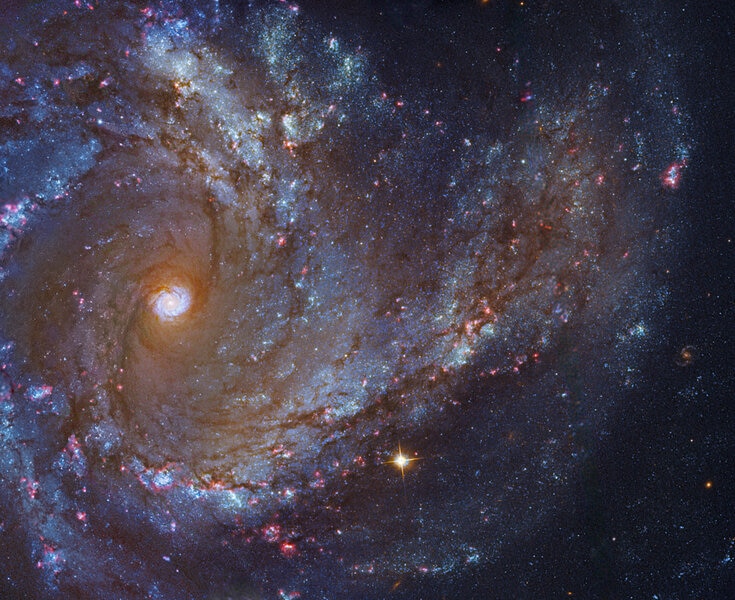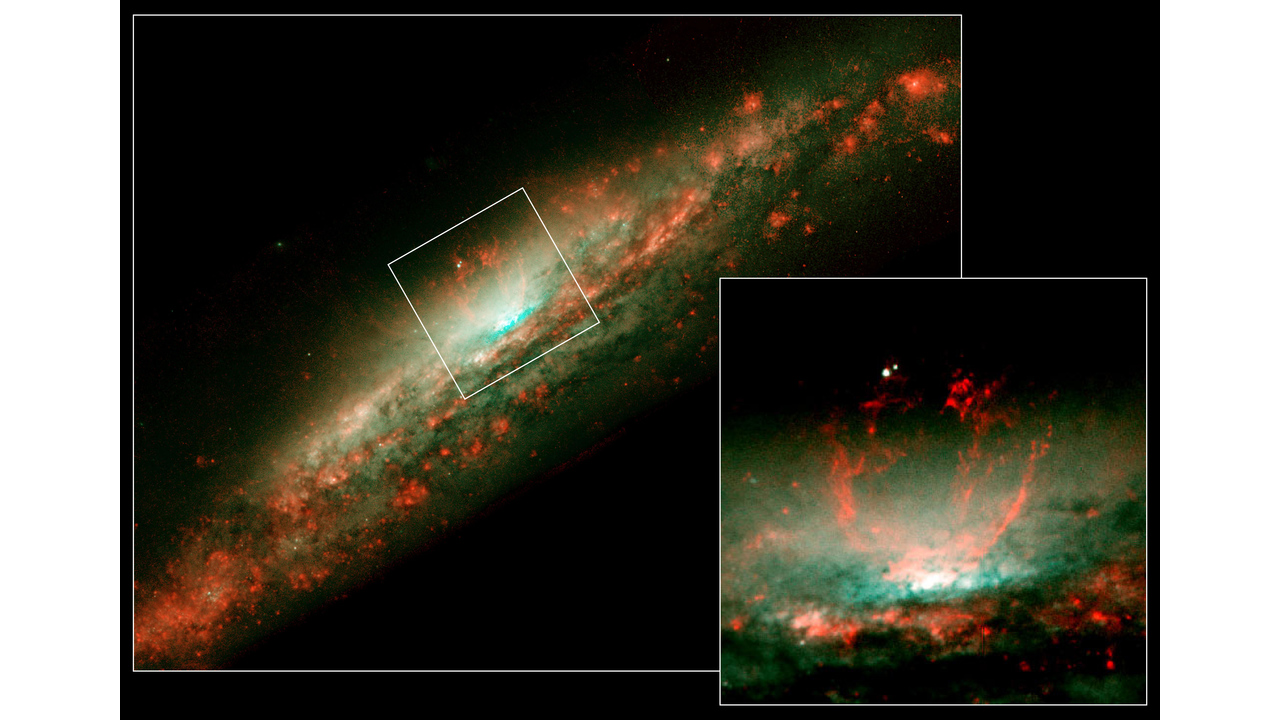Today's APOD is very nice "classic" portrait of NGC 253 that shows us the nitty gritty of this galaxy: the perfect oval outline of the disk, the yellow inner region, the blue disk, the occasional small pink dots of emission nebulas, and the chaotic jumble of broken dust lanes and dust clouds.
And speaking of the perfect outline of NGC 253...
NGC 253 as a coin? NGC 253 is not called
the Silver Dollar galaxy for notning.
I can't stop talking about the perfect oval outline of NGC 253 just yet, because such a perfect shape is by no means a given thing among spiral galaxies.
How do we know that the Milky Way has an S-shaped disk? We know it because astronomers monitored more than 2,400 Milky Way Cepheid stars, whose true brightness can be reliably inferred from their pulsations, to discover that the Cepheids create an S-shaped outline of our galaxy's disk. Read about it
here.
Let's get back to NGC 253. There is a link in today's caption that takes us to a great Hubble image of the chaotic dust in the disk of NGC 253:
Dust in the disk of NGC 253. Credit:
Hubble Legacy Archive, ESA, NASA; Processing and additional imaging: Robert Gendler
Yes, but I also like this picture of the core of NGC by R. Jay GaBany. Have you ever seen such an incredible number of smoking "chimneys" rising from a galactic disk?
The fact that there is such a lot of dust in the disk of NGC 53, and the fact that the dust is so chaotic, strongly suggests that some very energetic events have taken place in NGC 253. Like a lot of star formation. Indeed, NGC 253 is classified as a starburst galaxy, and yet we see no obvious signs of a huge starburst. There are no strikingly large blue star clusters in NGC 253 and no unusually big bright pink emission nebulas. And NGC 253 looks so different from many other starburst galaxies - just compare it to M61:
The reason why we see so little of the starburst in NGC 253 is that the thick of the action is taking place in the galaxy's very core:
The core starburst of NGC 253 is perhaps similar to the core starburst in M82. Obviously the core of M82 appears to be even more energetic and violent than the core of NGC 253. And in M82, the disk itself is somewhat warped, we see no visual signs of any spiral shape in the disk, and the disk is completely devoid of any blue star clusters of pink emission nebulas.
Let's get back to NGC 253 again. Unlike M82, it has not been "destroyed" a s a spiral galaxy, because we can make out a spiral shape in the disk of it - it's not easy, but we can. And we can indeed see modest amounts of star formation in the disk. And of course, NGC 253 is the king of its own gang, by far the largest of the rather sparse Sculptor group of galaxies. By contrast, M82 is taking punch after punch from the nearby big bully of its galaxy group, M81!
But I want to end my post on NGC 253 with an absolutely glorious picture of this galaxy by Mark Hanson. There may be more star formation in NGC 253 than we can readily see because of all the dust, and exposing NGC 253 through an Hα filter may bring out a lot of it for us. Mark Hanson did just that and brought out so much rosy red light in NGC 253 that the galaxy looks fit for Valentine gift, even if today is one day late!

Ann
 NGC 253: Dusty Island Universe
NGC 253: Dusty Island Universe





















